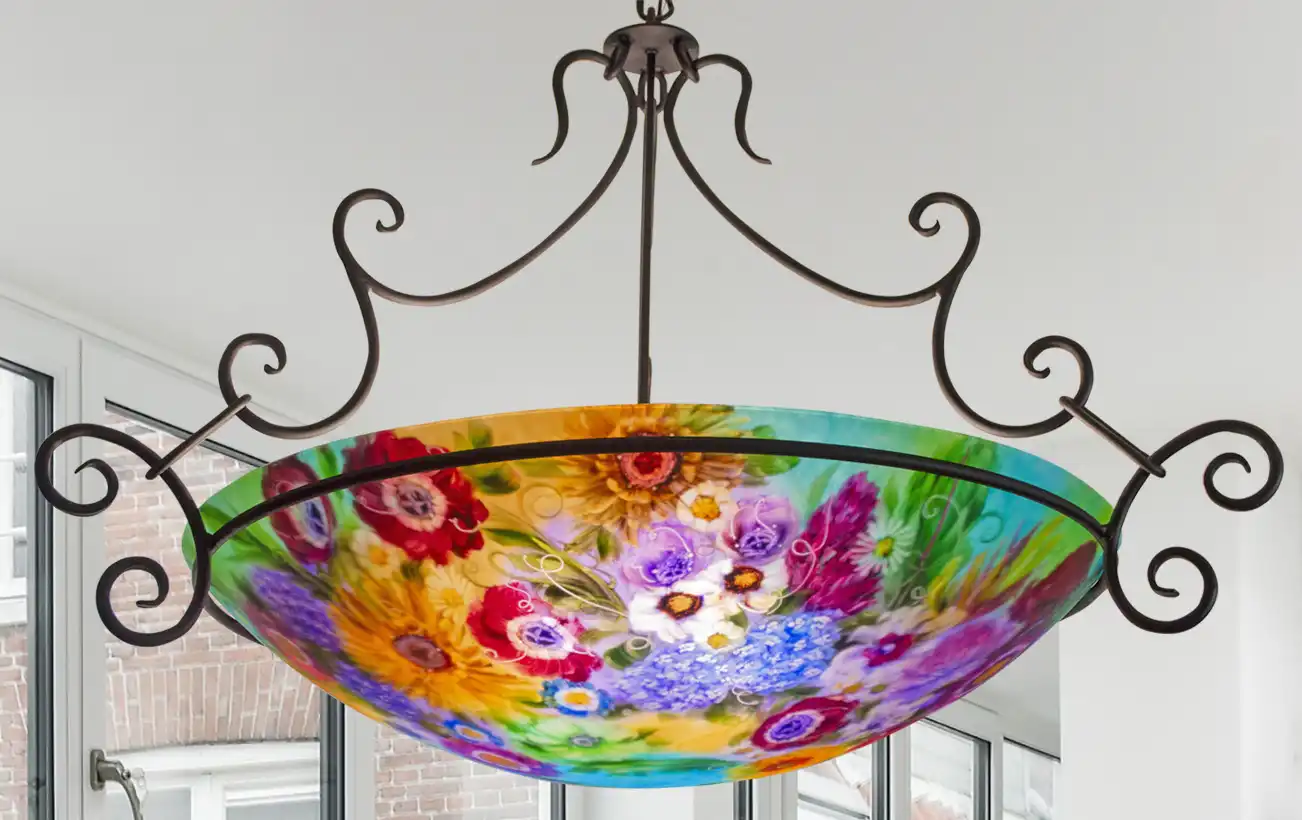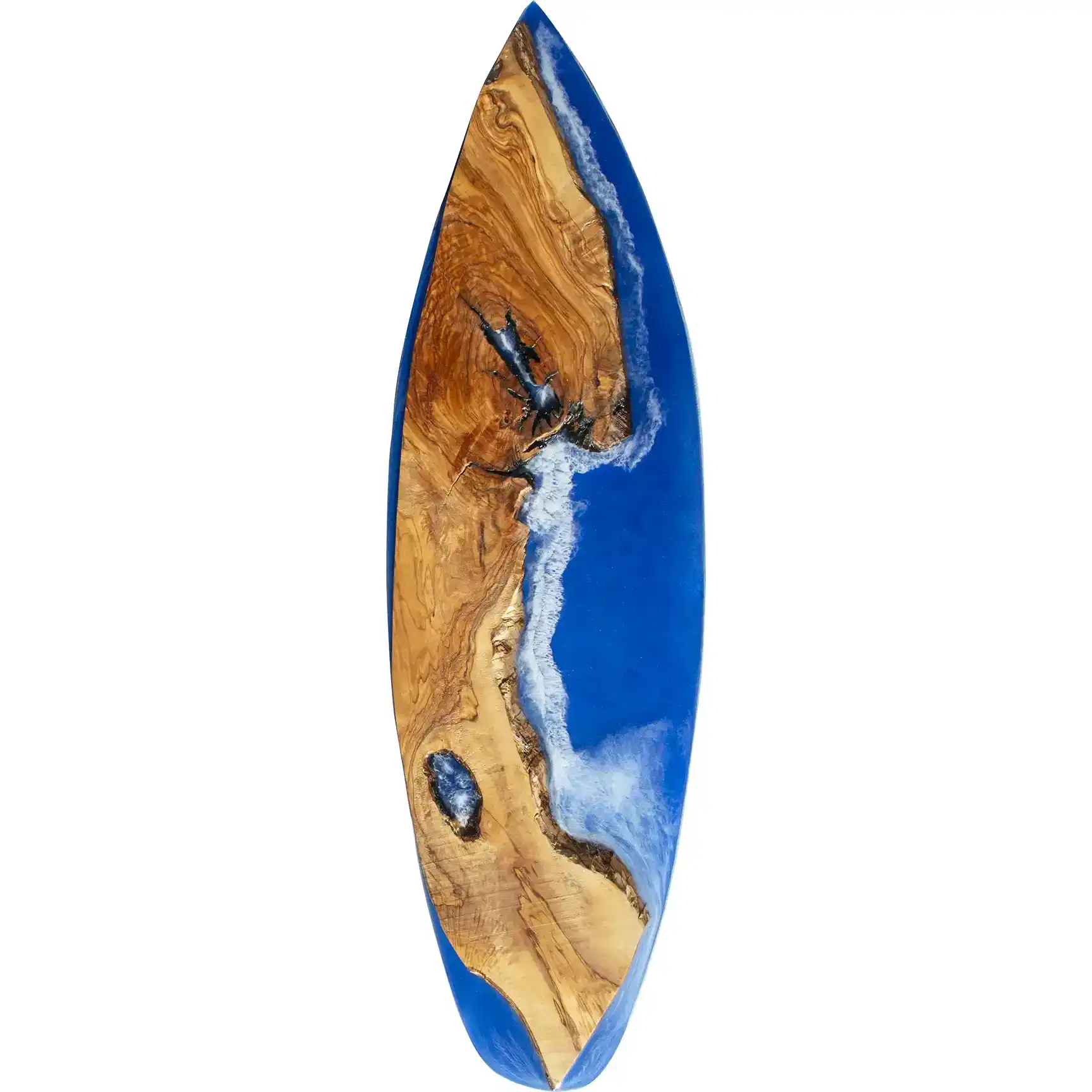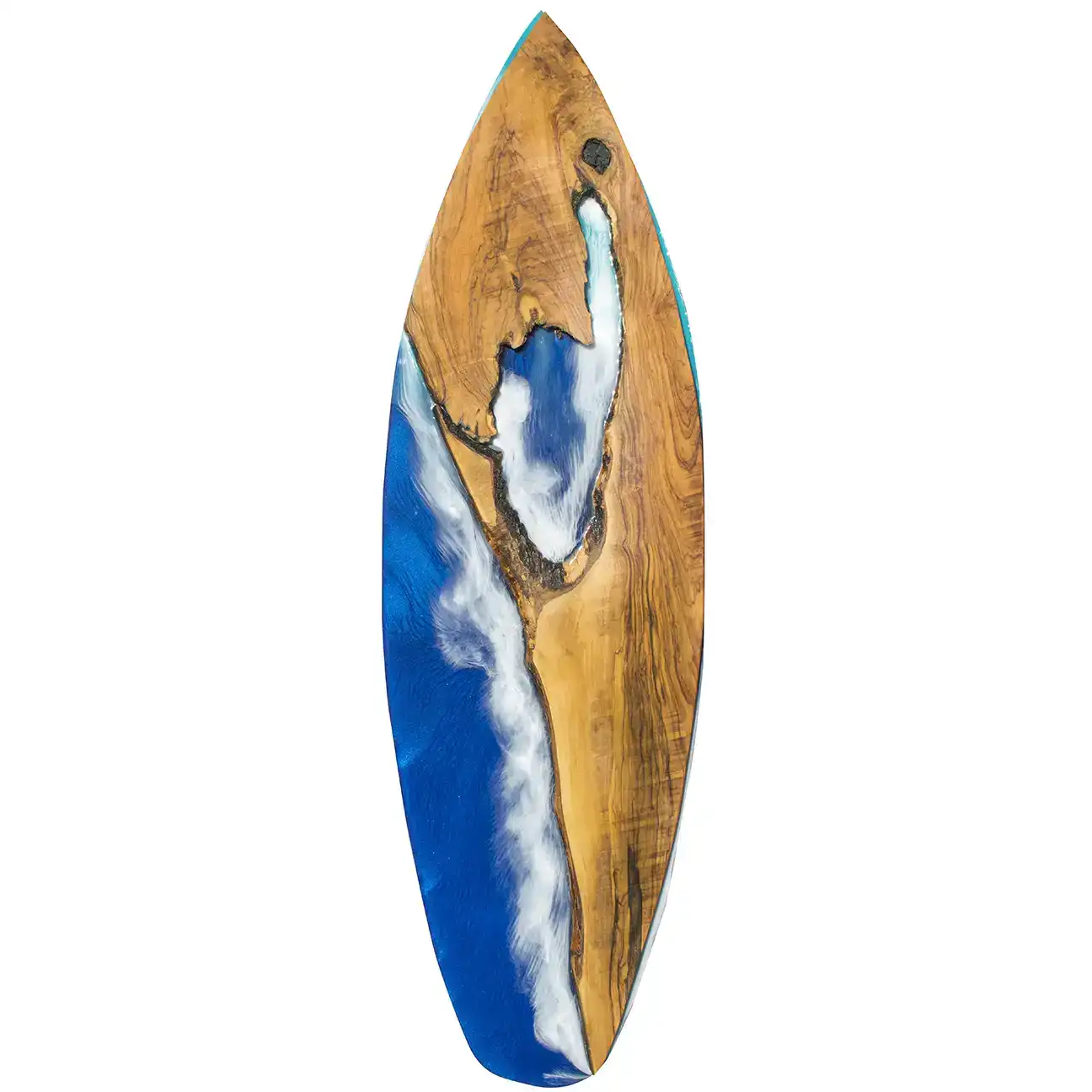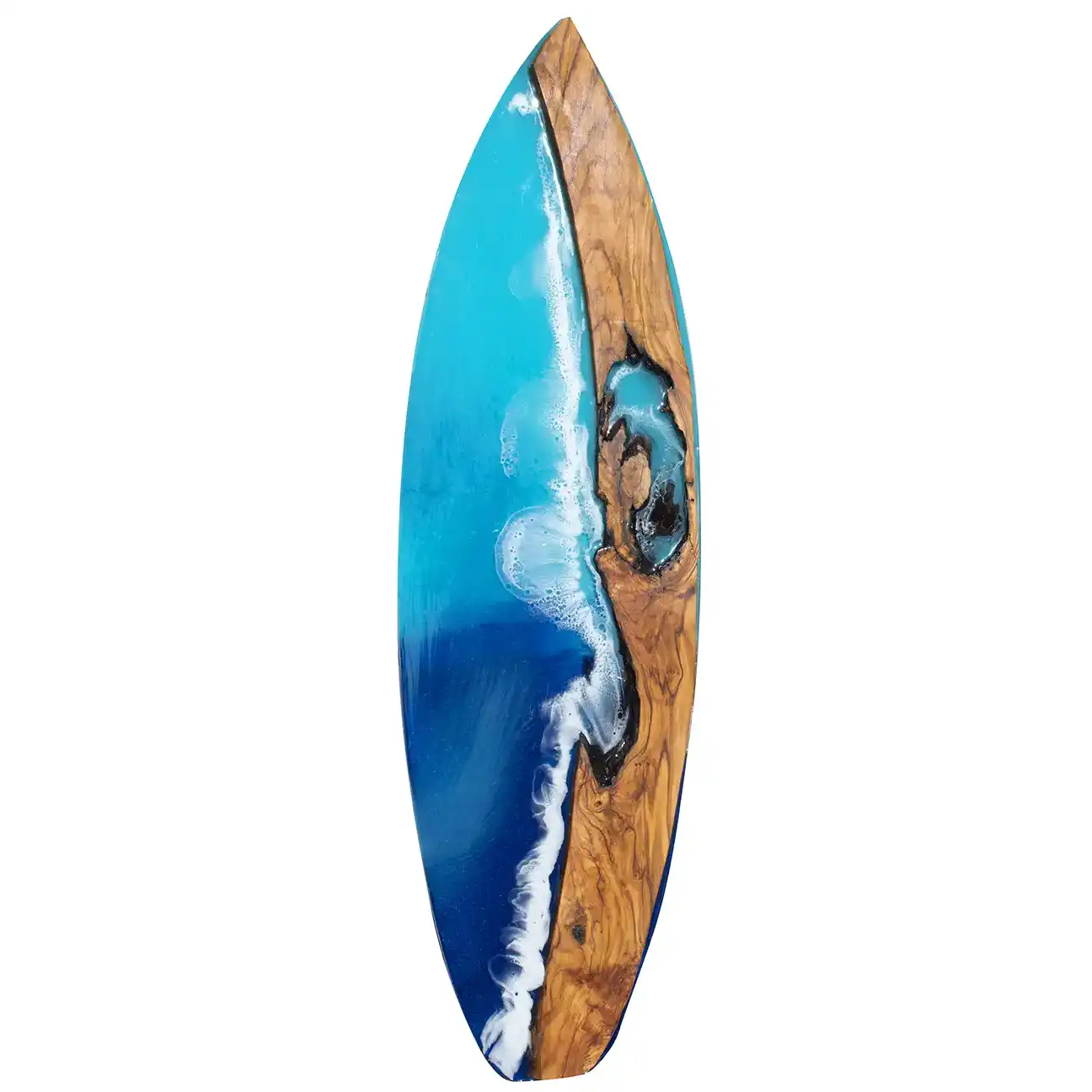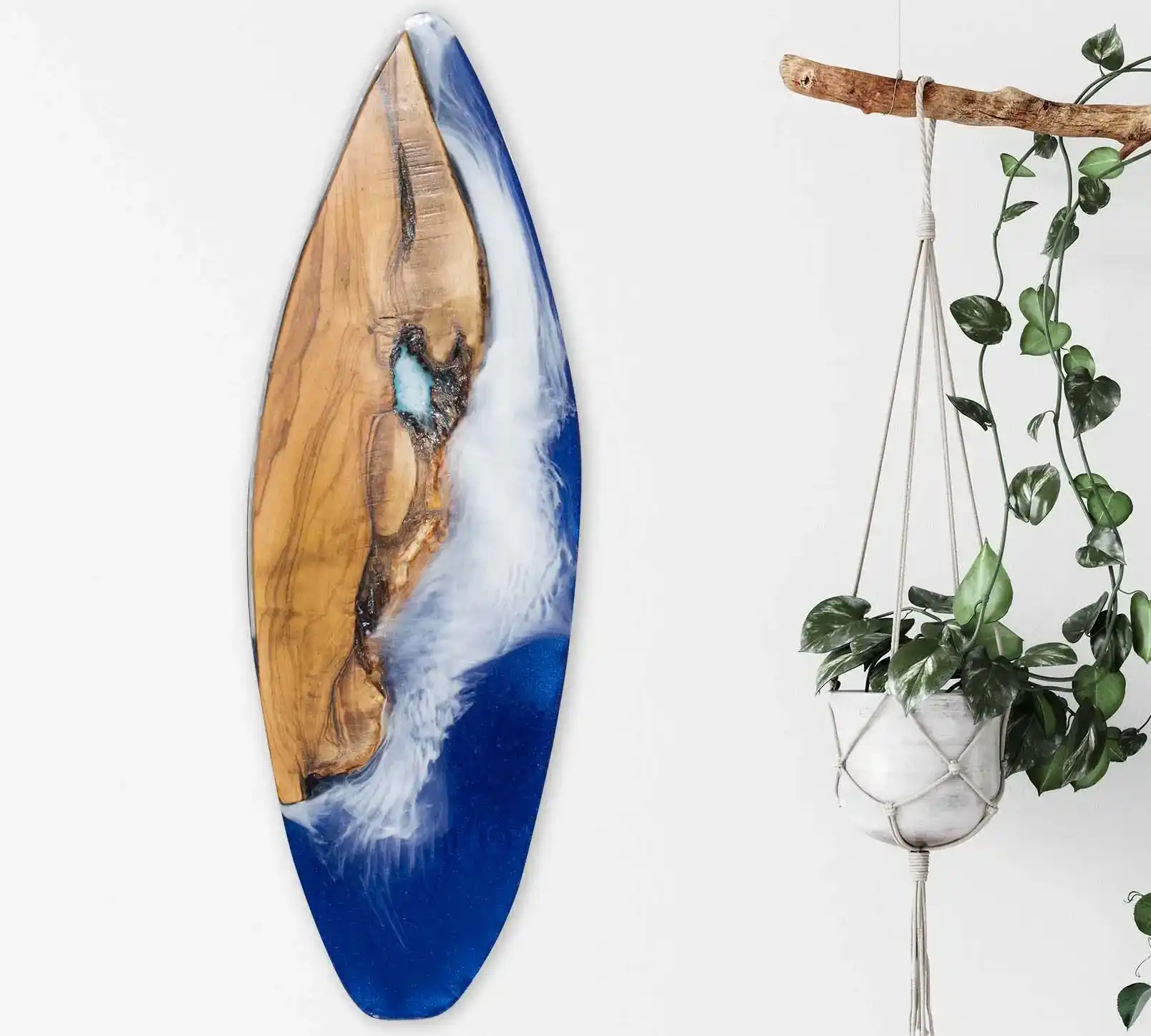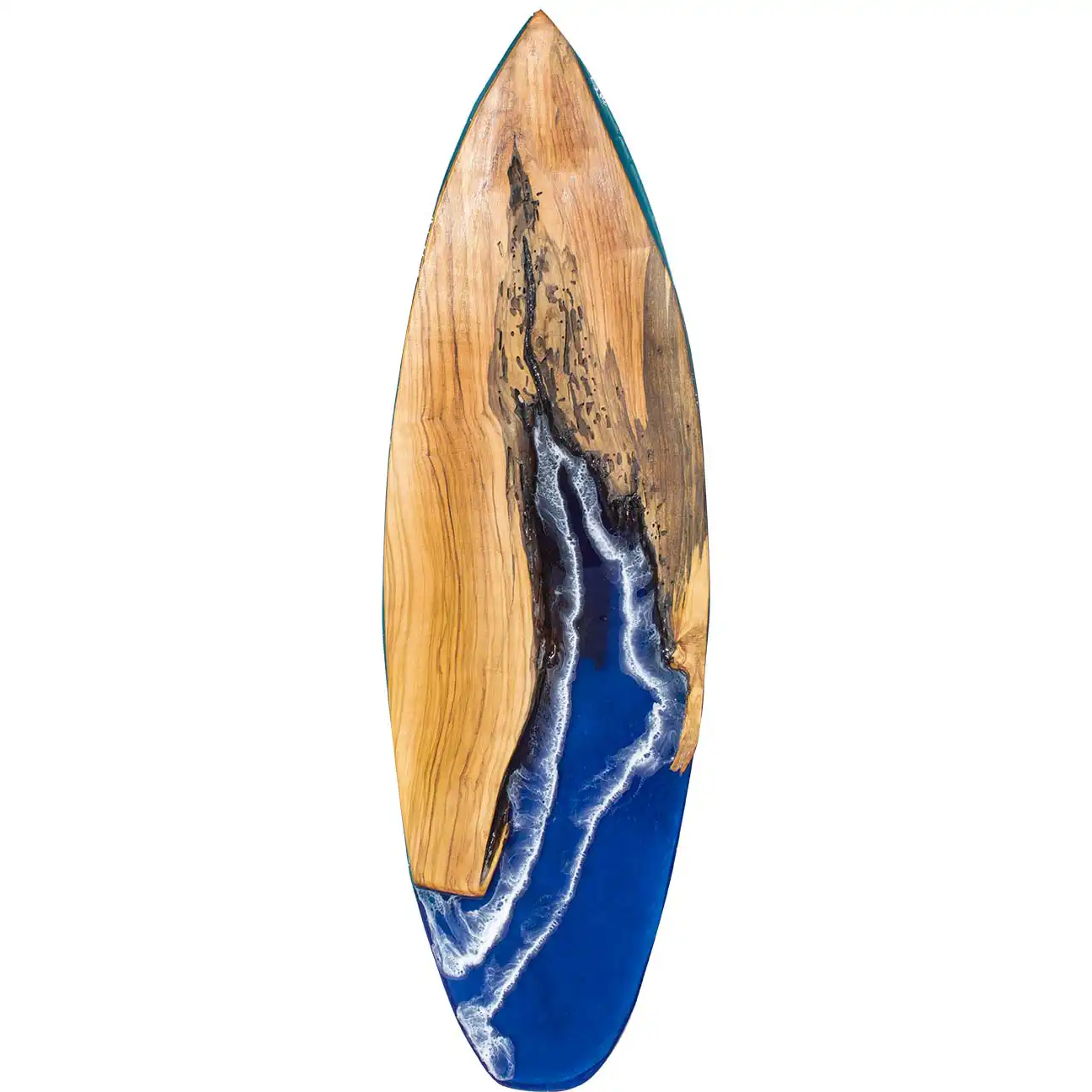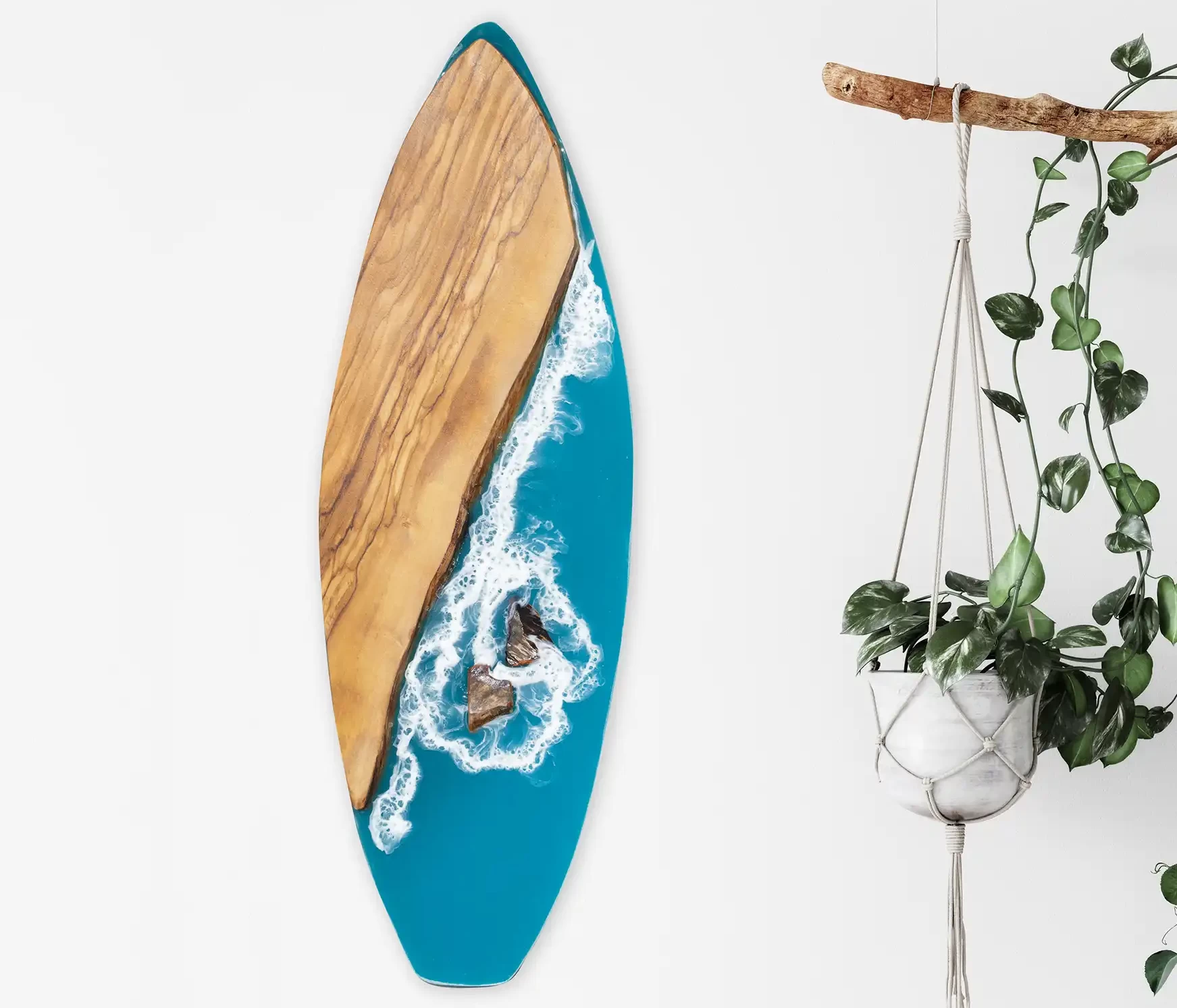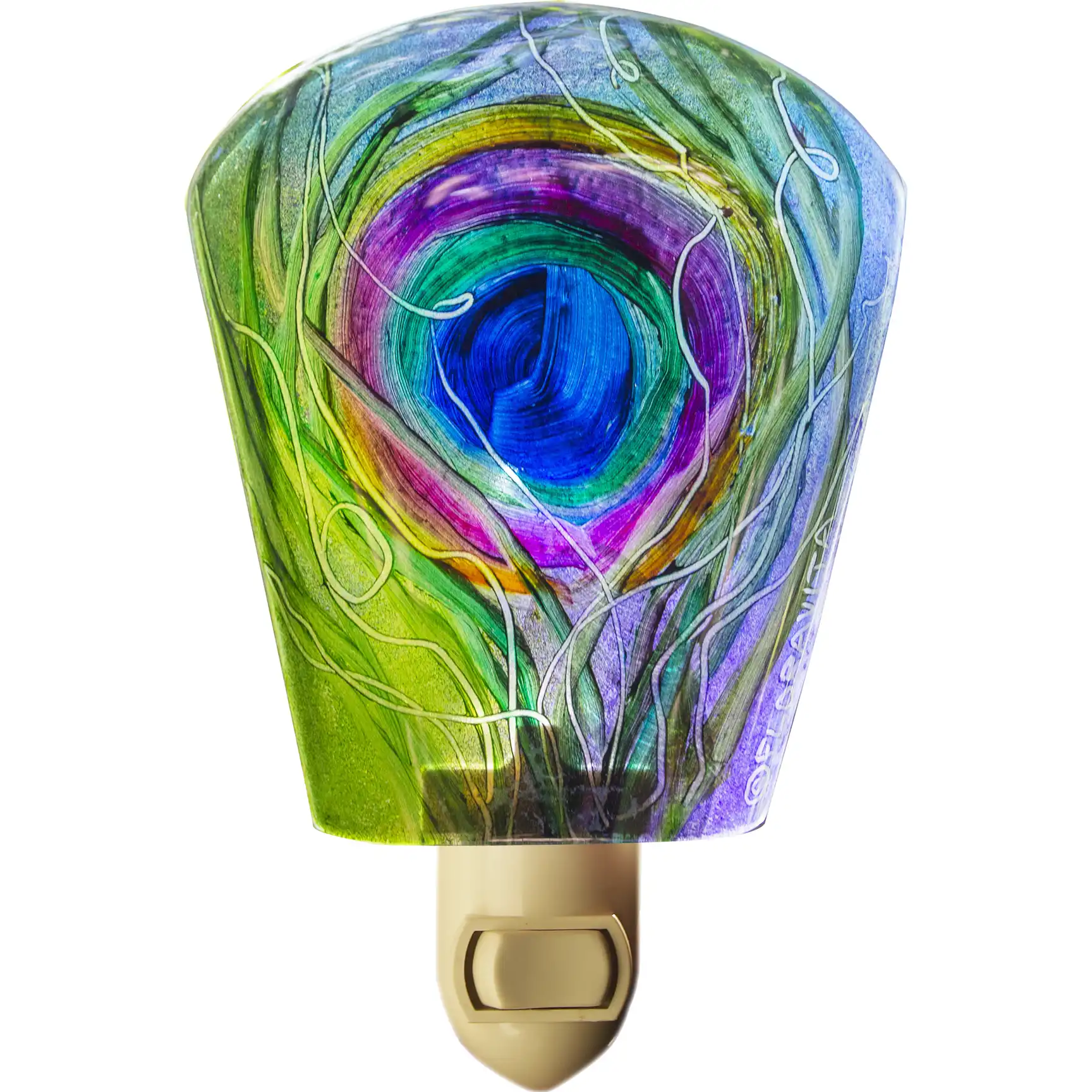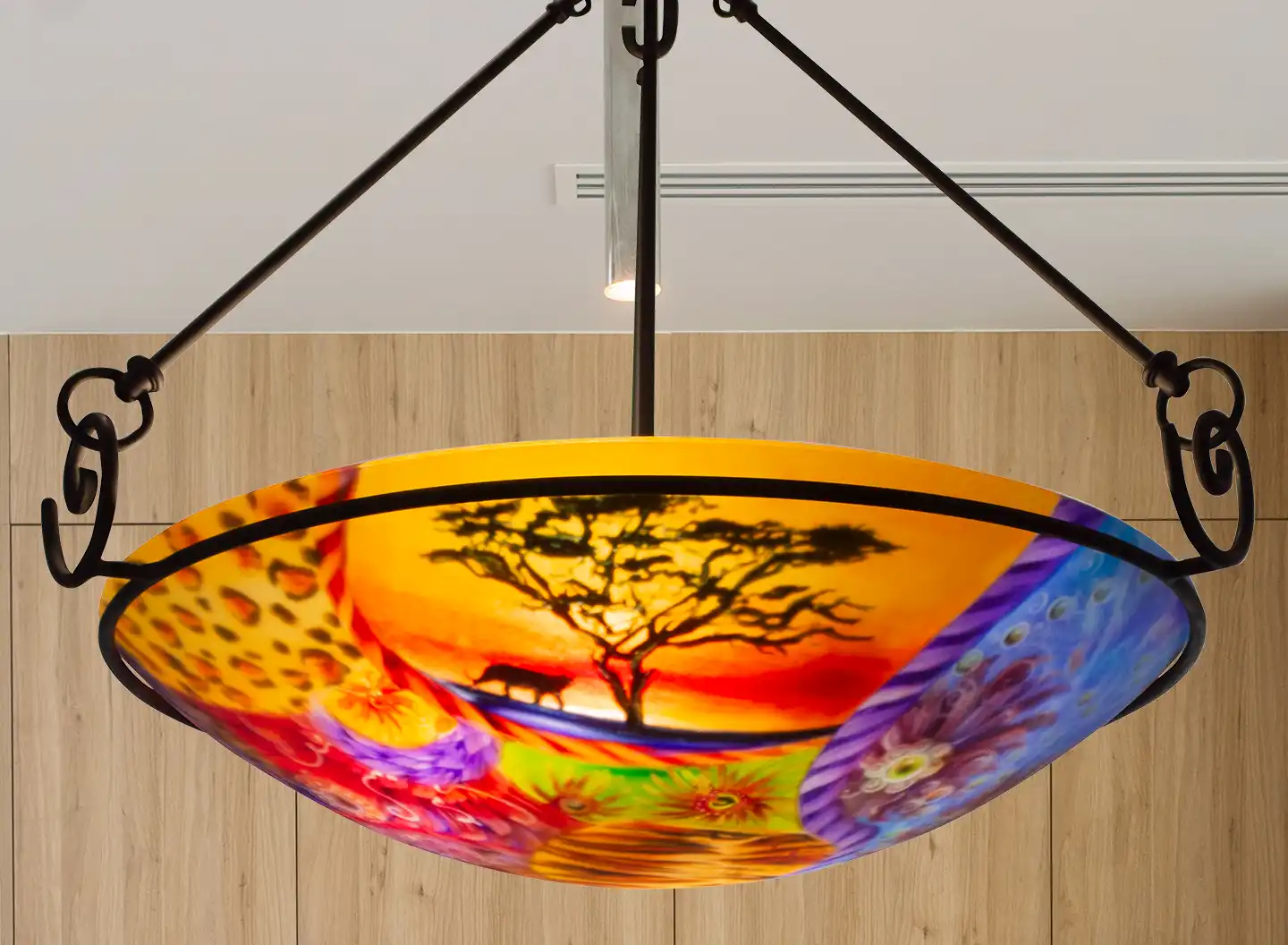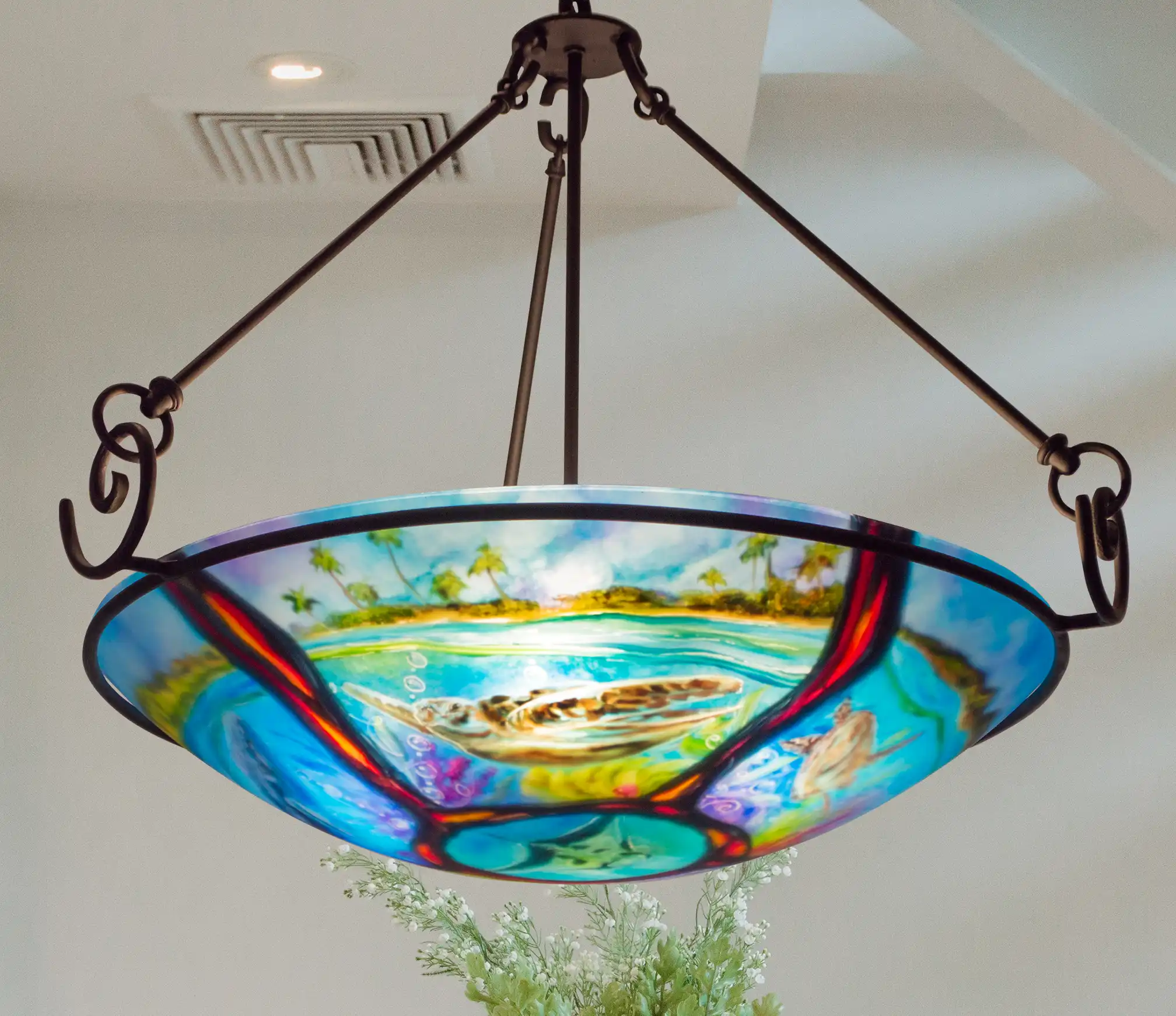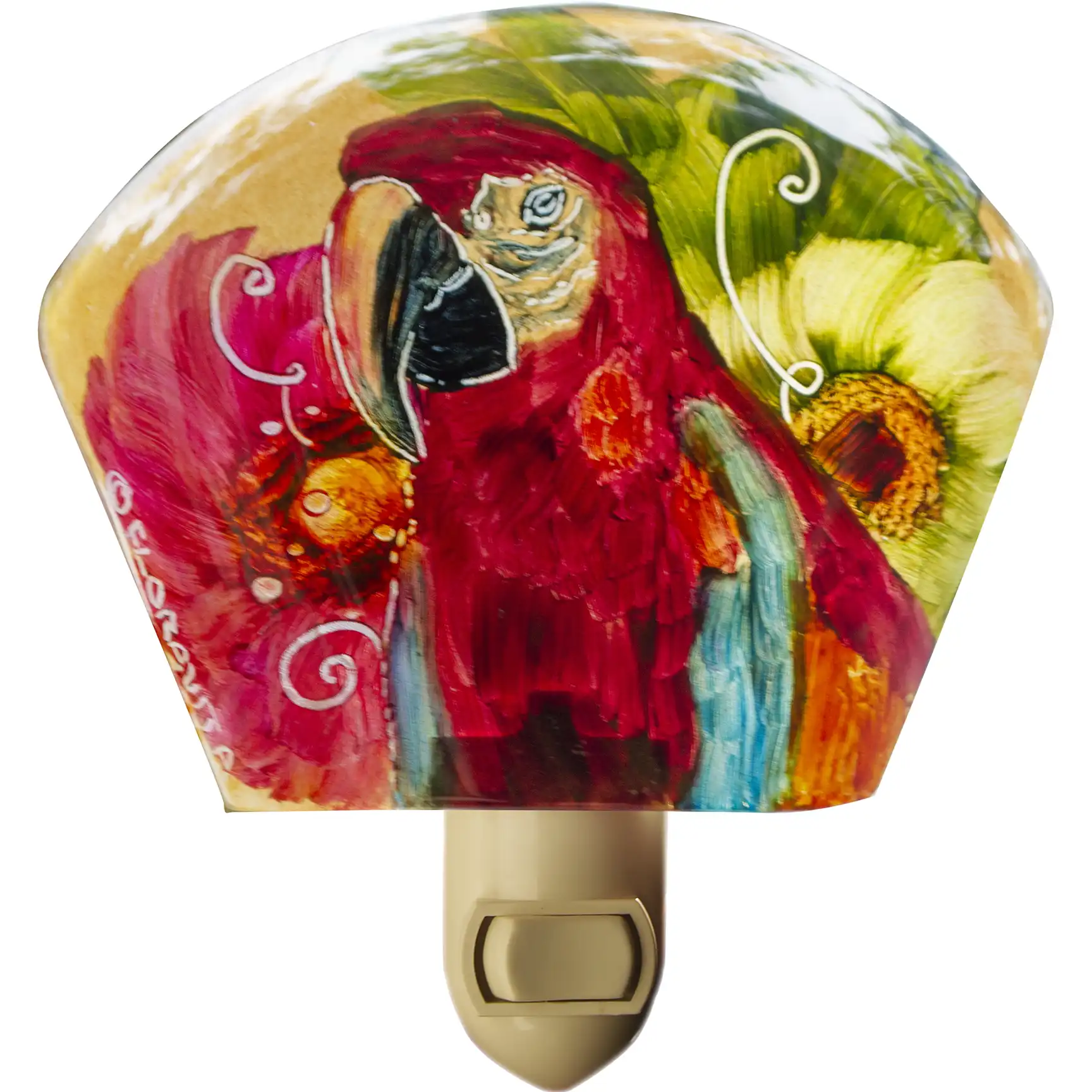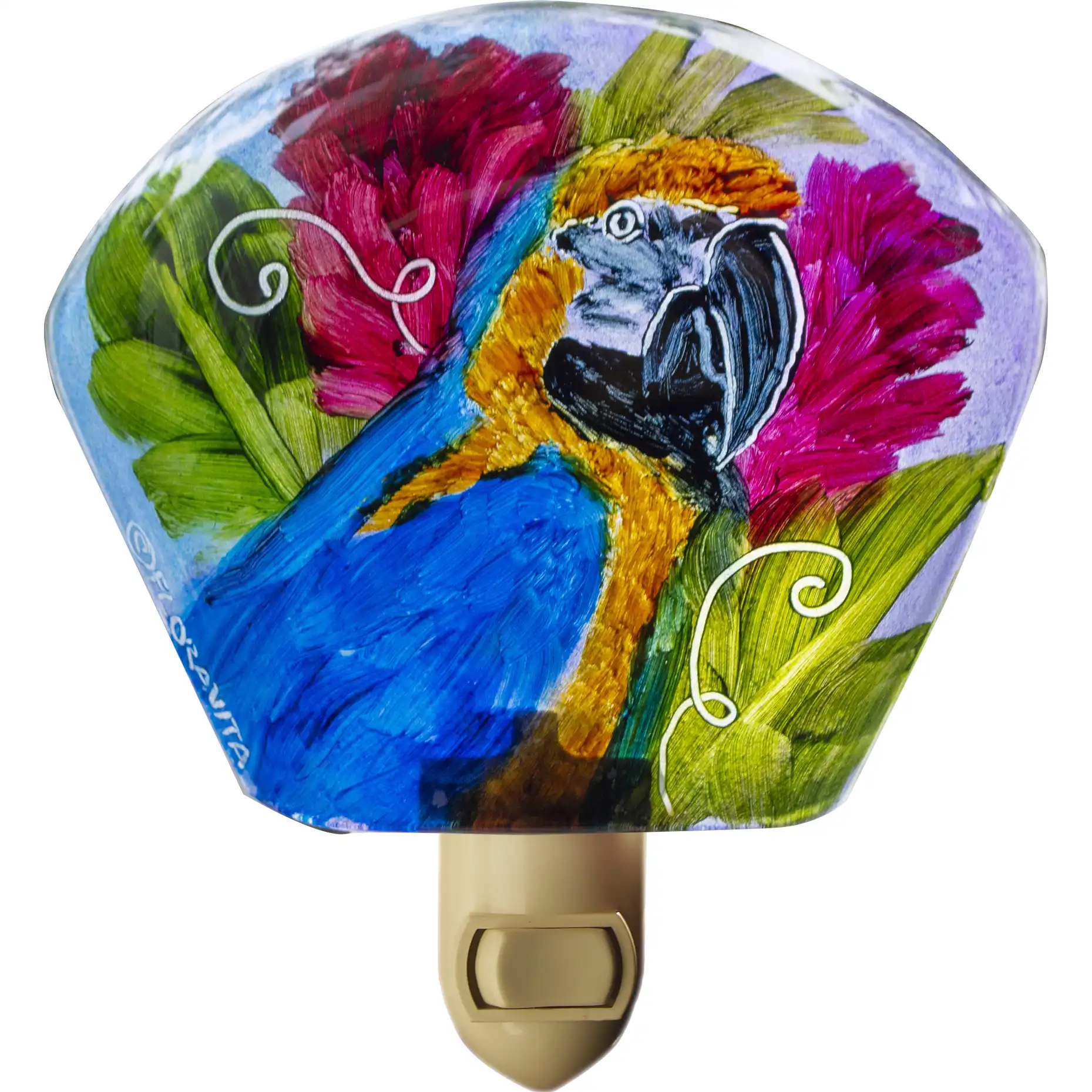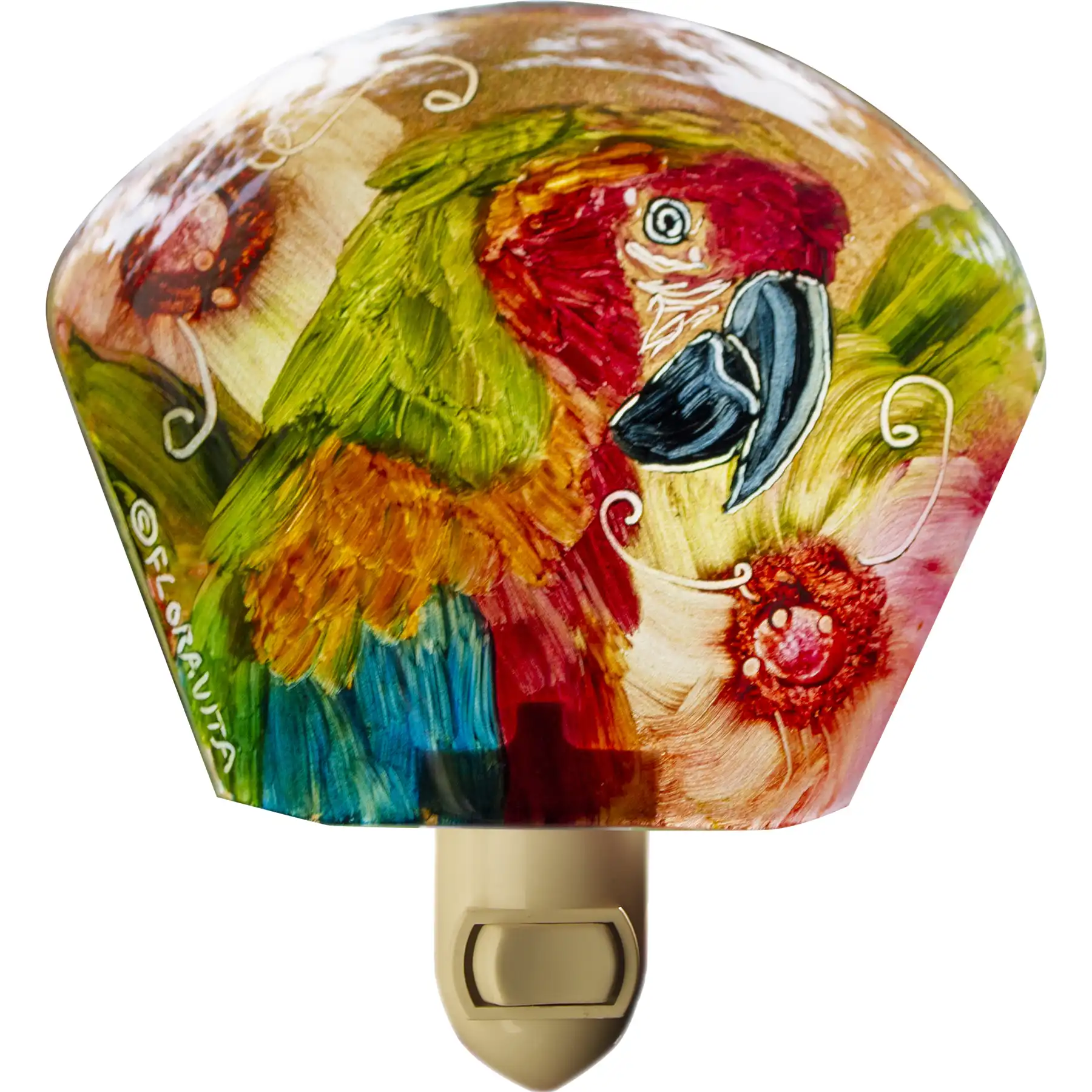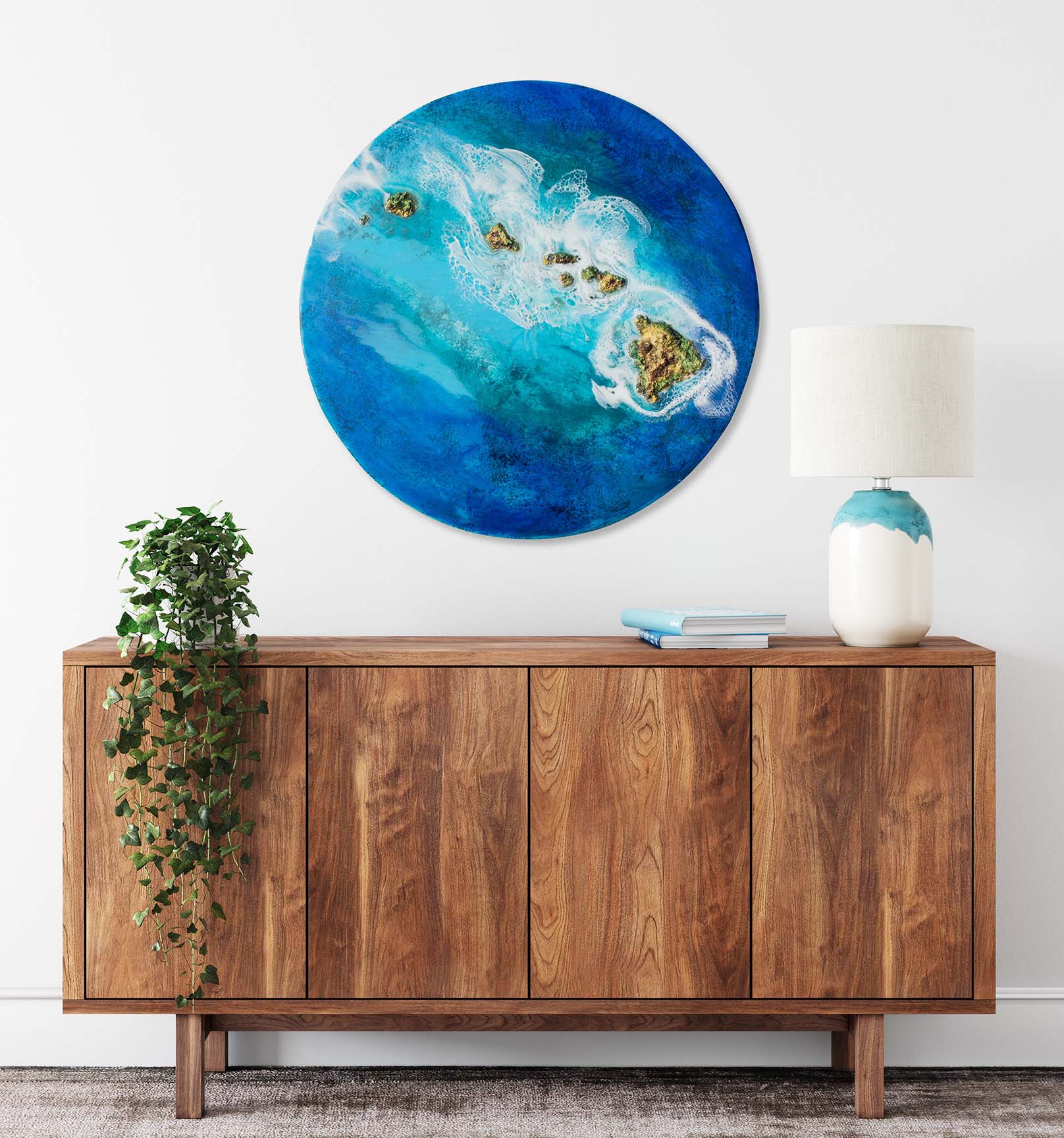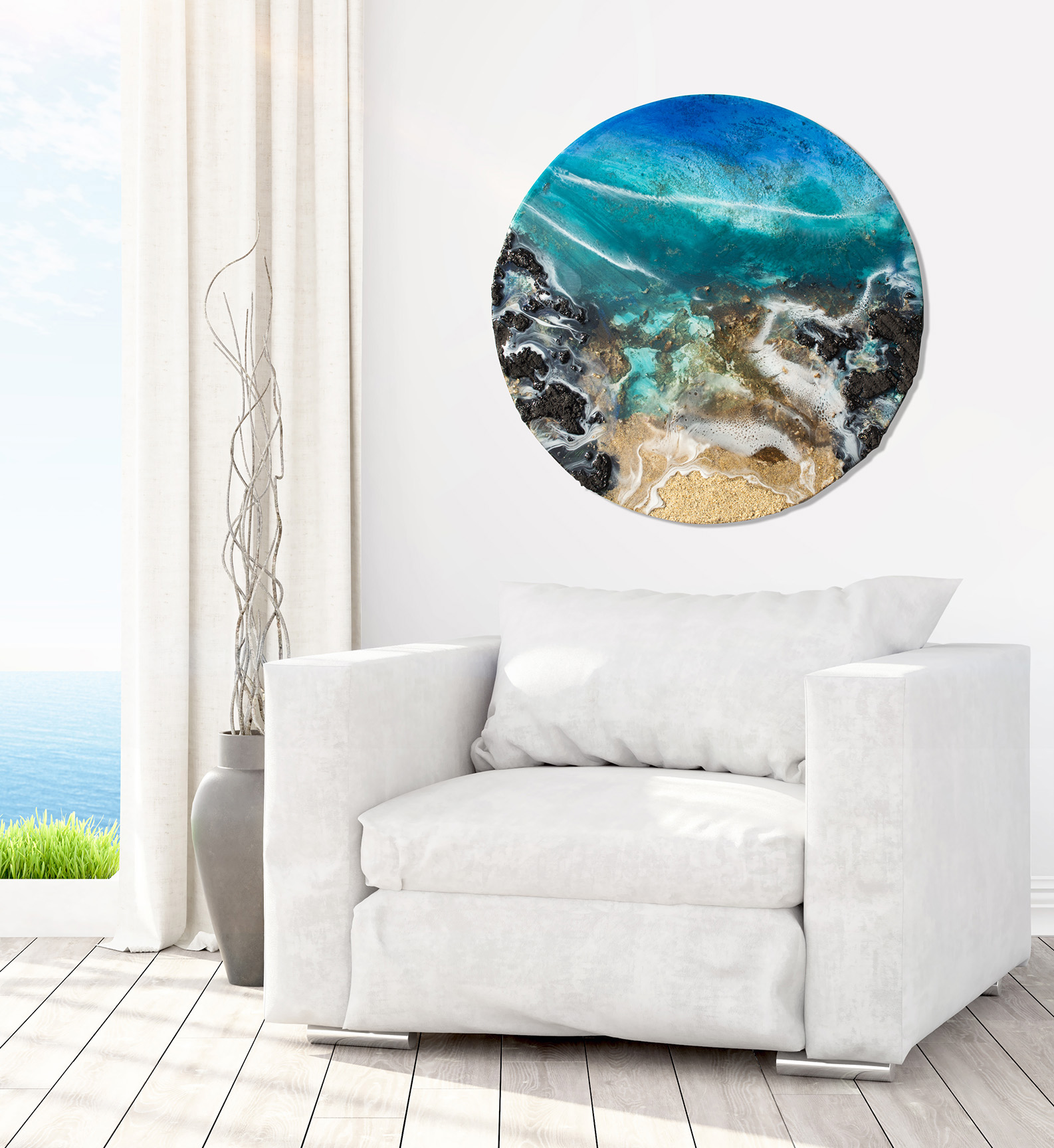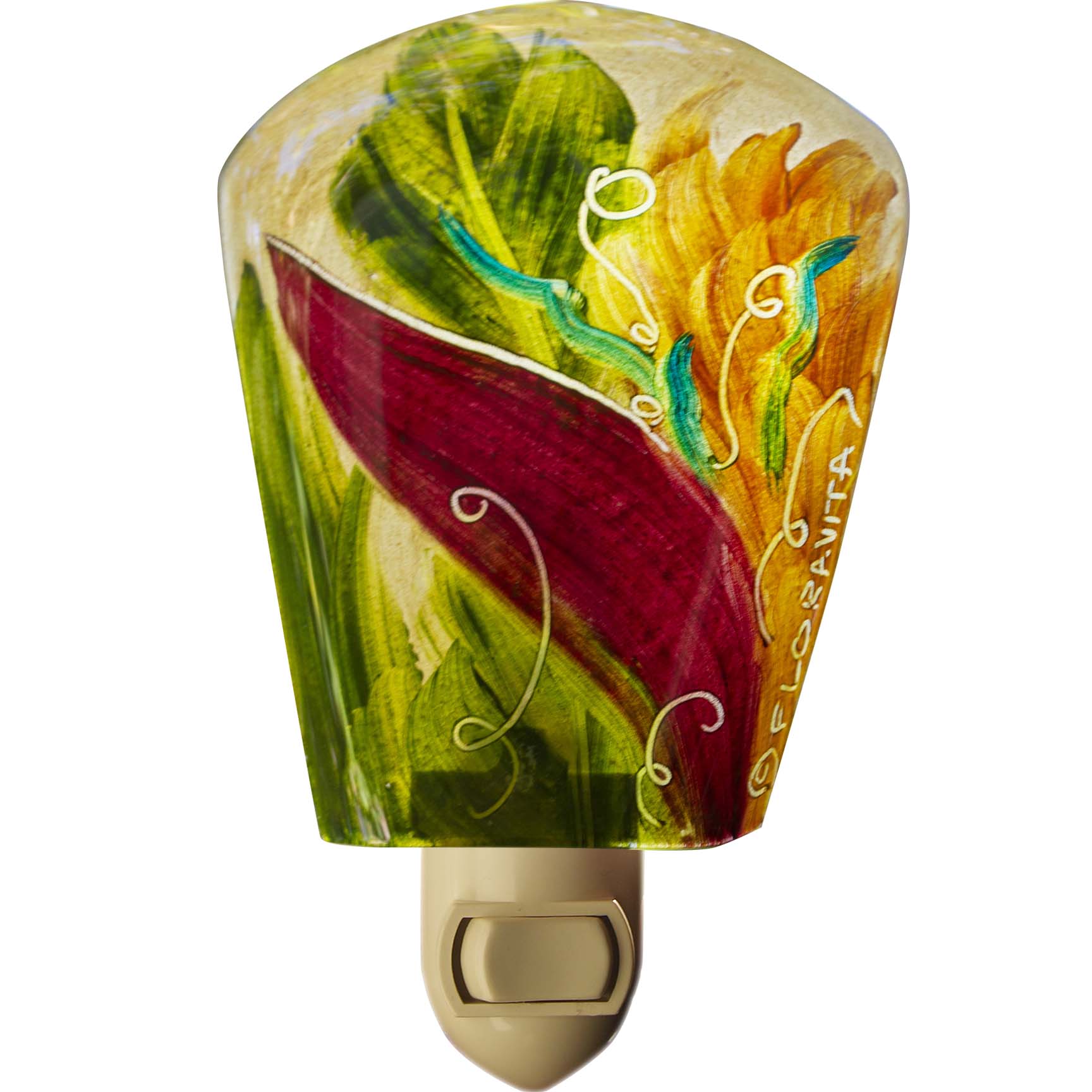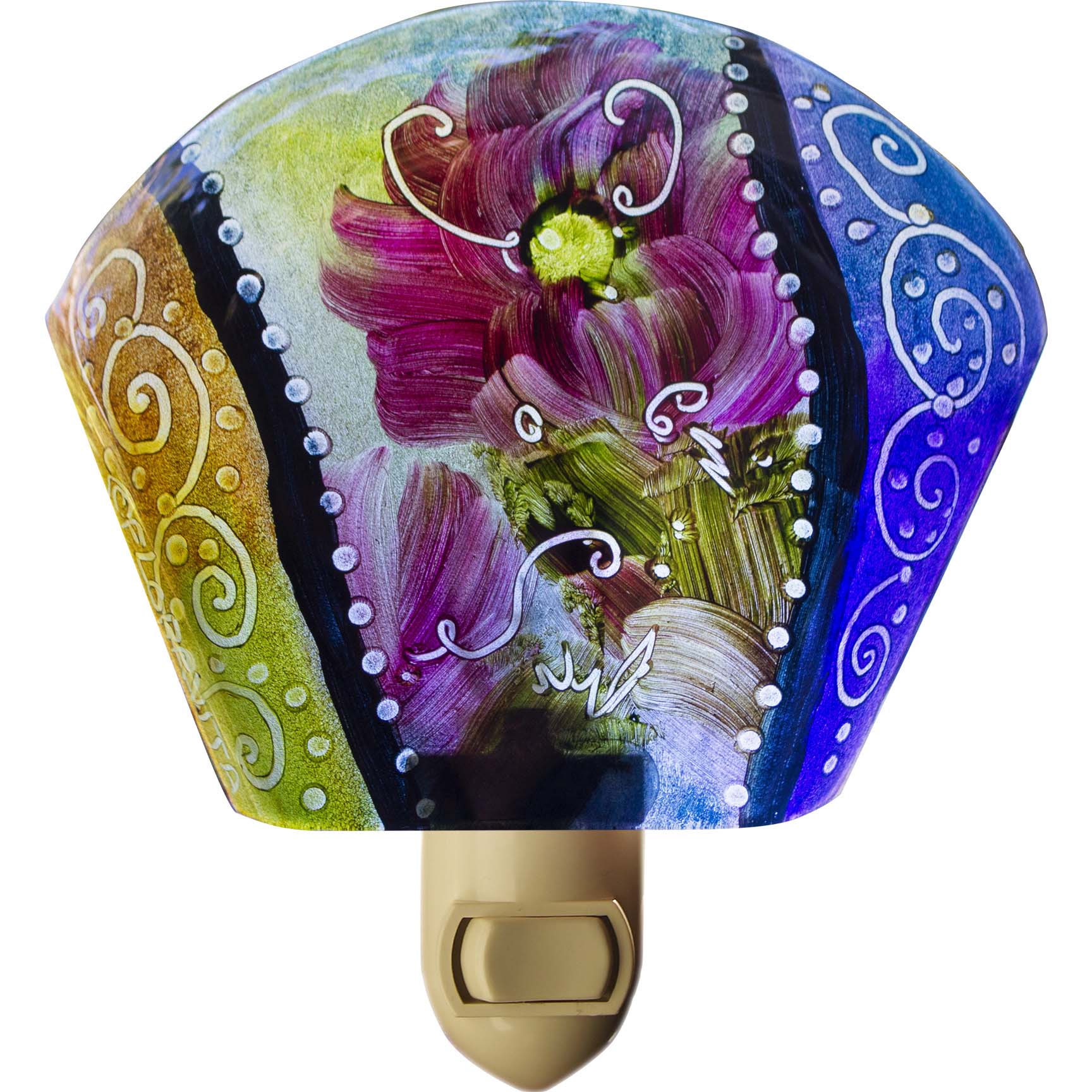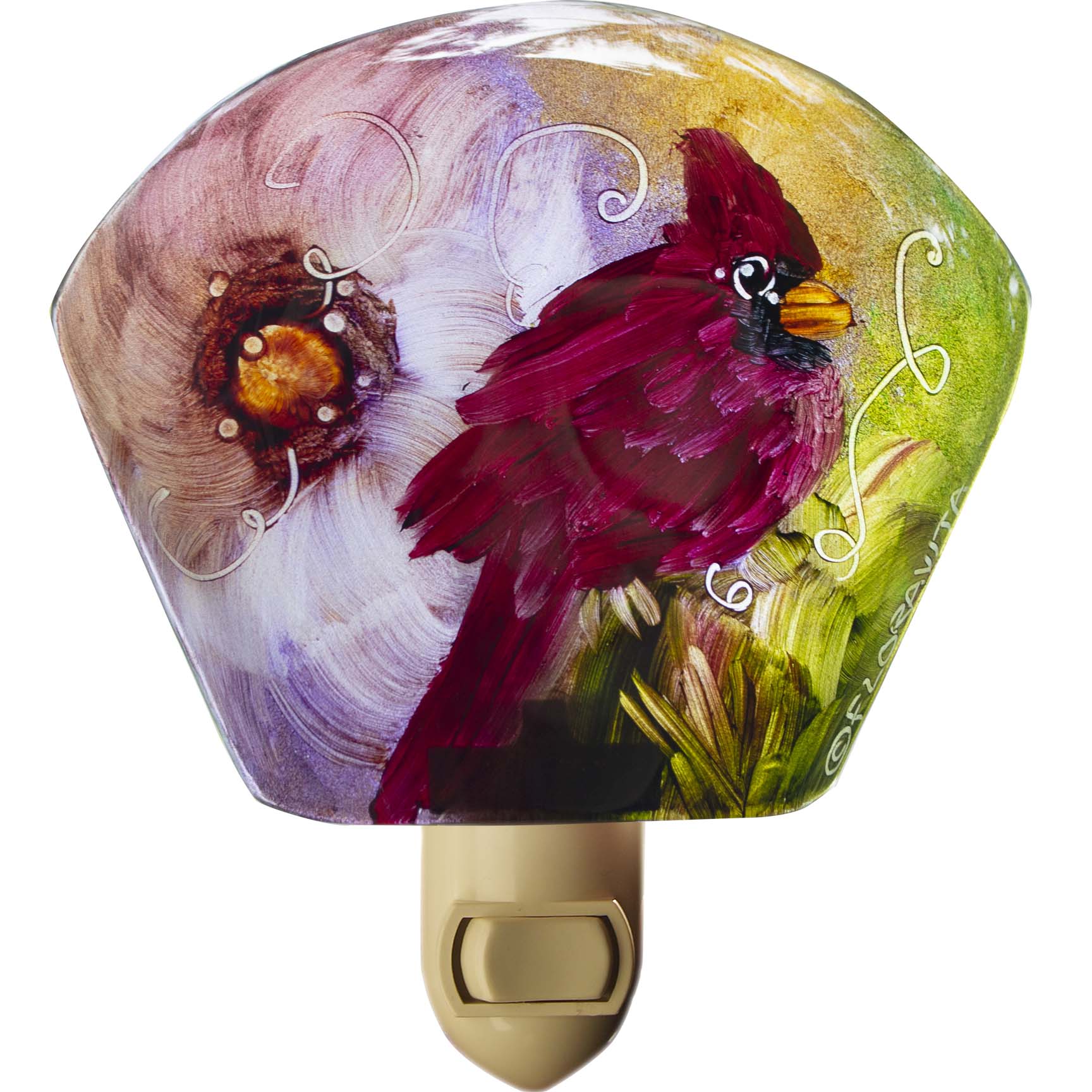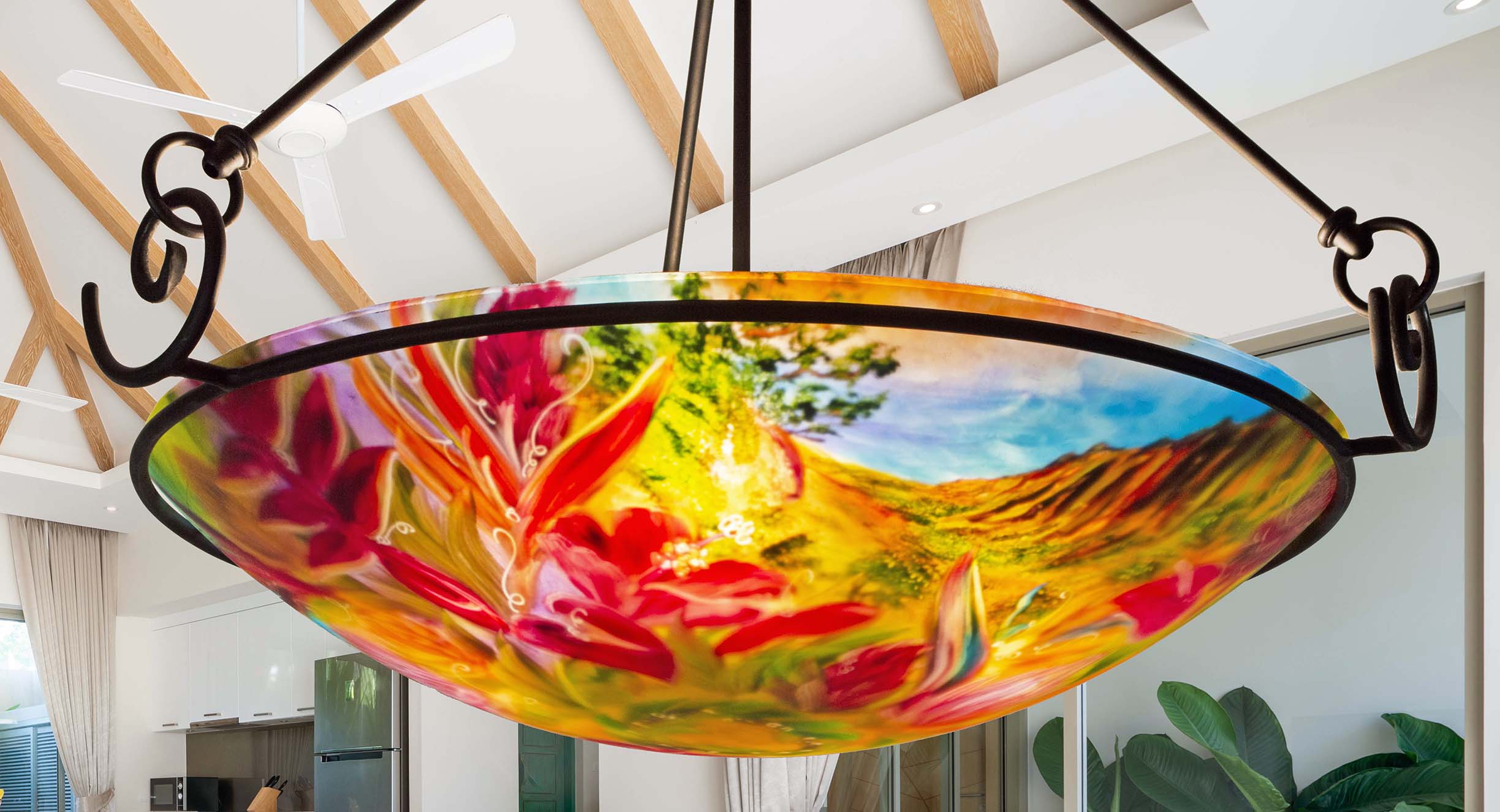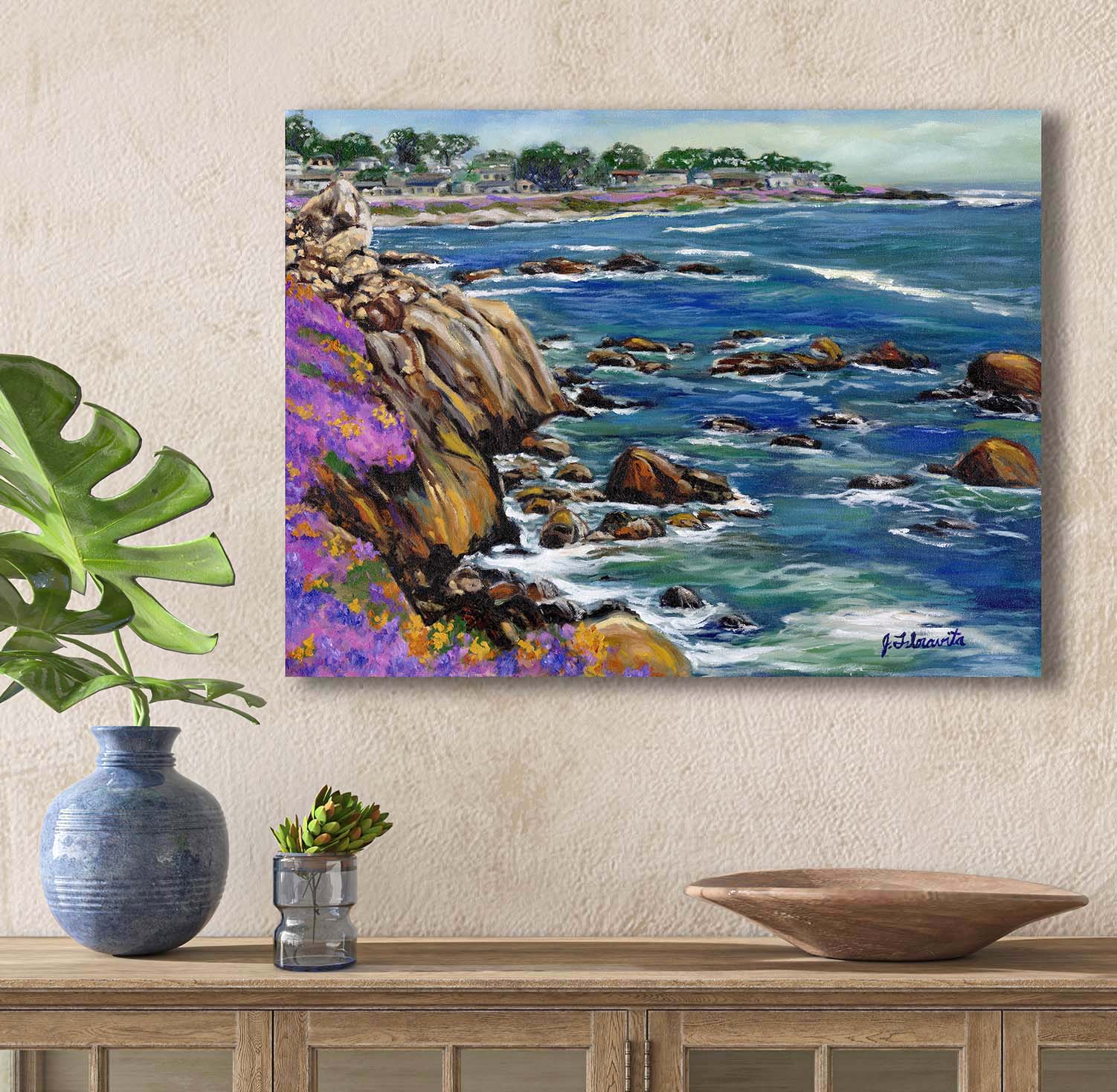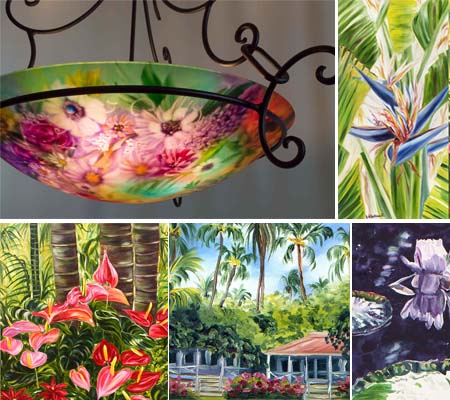 This is another design idea for my abstract reverse painted glass chandeliers that I’m very excited about. Arizona Contemporary is inspired by both concepts that I’ve had in my mind for a few years and design elements taken from the studio glass movement, which turns 50 years old this year!
This is another design idea for my abstract reverse painted glass chandeliers that I’m very excited about. Arizona Contemporary is inspired by both concepts that I’ve had in my mind for a few years and design elements taken from the studio glass movement, which turns 50 years old this year!
Desert flowers alternate with colorful sections that are inspired by stringers in blown and fused glass. When this hand painted chandelier hangs, from some angles it appears to swirl and from other angles it appears like linear waves on a gentle lake. It has the colors of the Sedona, Arizona sunset and yet it’s contemporary, thus the name.
The studio glass arts movement formed in the early 70s. These wonderful artists pushed the boundaries of hot glass and are responsible for making blown glass and fused glass the popular art form that it is today. These are the same wonderful artists that I owe thanks for educating the public through art festivals on the value of glass art and that is the reason why younger artists like myself are able to successfully make a living. Through the art festival system, I know many veteran studio glass artists, some of which had studios of 10 assistants in their hey-day. These days a large glass art studio is expensive to run so many of these same artists (who at one point were selling over a million in glass art sales each year) are now down to one or two production assistants. I have exhibited my oil and watercolor paintings in tropical themes in art festivals in California since 2003. Blown and fused glass has always been one of the most collected art forms in these shows.
I’d like to also point out that the art form of reverse painted glass is not part of the studio glass movement—it was a very popular art form in the late 1800s and early 1900s, so it’s hey-day predates the studio glass arts movement by a few decades.
Thank you for spending the time to look at yet another one of my reverse painted glass chandeliers and thank you for reading my blog!

